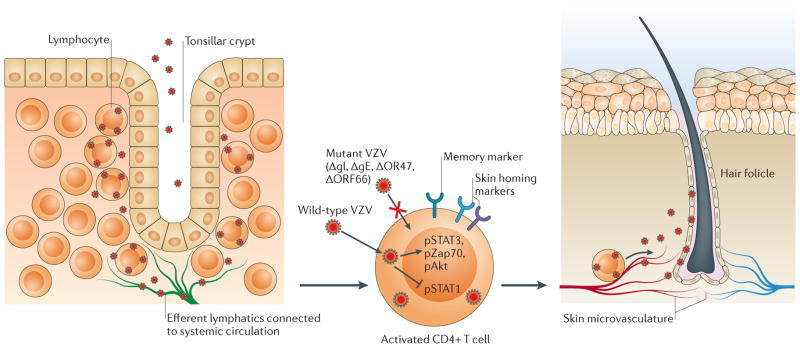Figure 2. VZV T cell tropism.

According to the model of varicella zoster virus (VZV) cell-associated viraemia, tonsil T cells are infected following VZV inoculation and replication in respiratory mucosal epithelial cells. T cells traffic into and out of tonsils across the squamous epithelial cells that line the tonsilar crypts (left panel). VZV has increased tropism for activated memory T cells that have skin-homing markers, which are common in tonsils (centre panel). These T cells are programmed for immune surveillance and can transport the virus across capillary endothelial cells into skin. VZV glycoprotein E (gE) (through its unique amino terminus), gI and the viral kinases ORF47 and ORF66 are important for T cell infection. Proteins that regulate cellular gene expression are activated (in the case of signal transducer and activator of transcription 3 (STAT3)) or inhibited (in the case of STAT1) in infected T cells. The microvasculature is extensive at the base of hair follicles, where T cells transit into the surrounding skin and initial VZV replication is observed (right panel).
